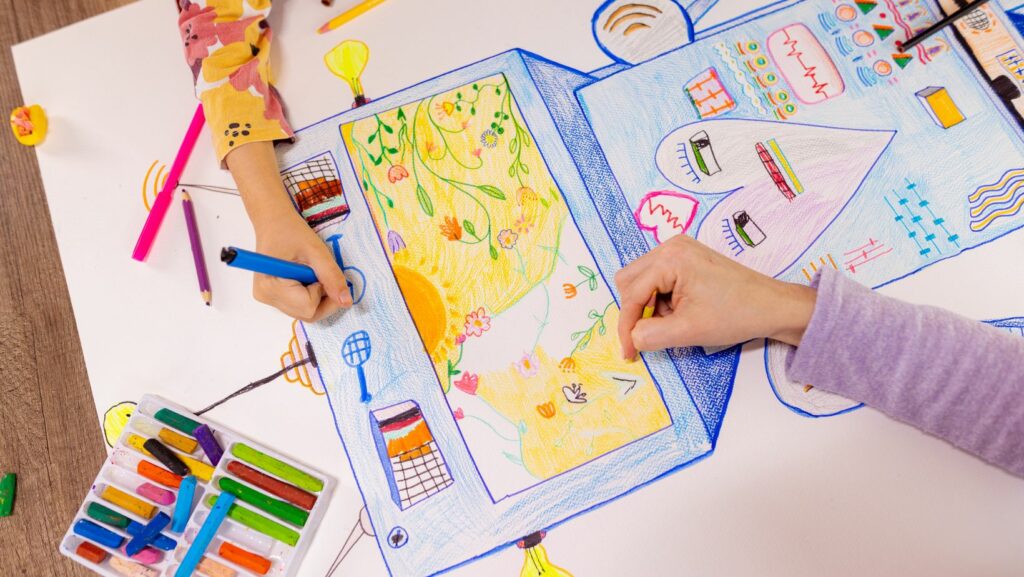 Exploring art projects in elementary education can ignite creativity and foster a love for self-expression in young minds. From colorful paintings to imaginative crafts, these projects play a crucial role in nurturing a child’s artistic abilities. Engaging in hands-on activities not only enhances fine motor skills but also encourages critical thinking and problem-solving.
Exploring art projects in elementary education can ignite creativity and foster a love for self-expression in young minds. From colorful paintings to imaginative crafts, these projects play a crucial role in nurturing a child’s artistic abilities. Engaging in hands-on activities not only enhances fine motor skills but also encourages critical thinking and problem-solving.
Incorporating art into the elementary curriculum goes beyond just creating visually appealing pieces; it cultivates a sense of individuality and boosts confidence in students. These projects serve as a platform for children to explore different mediums, experiment with techniques, and unleash their boundless imagination. By embracing art projects in elementary classrooms, educators can inspire a lifelong appreciation for the arts and empower students to communicate their unique perspectives creatively.
Art Projects Elementary
Art projects in elementary education play a crucial role in nurturing creativity and self-expression in young children. Engaging in hands-on art activities not only enhances fine motor skills but also cultivates critical thinking and problem-solving abilities. By integrating art into the curriculum, students have the opportunity to explore various mediums and techniques, fostering individuality and boosting their confidence levels. This approach inspires a lasting appreciation for the arts, empowering students to express their unique perspectives effectively.
Engaging in art projects allows students to unleash their creativity and expand their imagination. By experimenting with different colors, shapes, and textures, children learn to think outside the box and express themselves uniquely.
Participating in art activities helps children improve their fine motor skills. By handling various art tools such as paintbrushes, scissors, and crayons, students enhance their hand-eye coordination and dexterity, which are essential for tasks like writing and manipulating objects accurately.
Popular Art Projects for Elementary Students
 Incorporating engaging art projects in elementary education is crucial for fostering creativity and self-expression in young learners. These projects not only enhance fine motor skills but also cultivate critical thinking and problem-solving abilities. By integrating various art activities into the curriculum, students can explore different mediums and techniques, fostering individuality and boosting their confidence levels.
Incorporating engaging art projects in elementary education is crucial for fostering creativity and self-expression in young learners. These projects not only enhance fine motor skills but also cultivate critical thinking and problem-solving abilities. By integrating various art activities into the curriculum, students can explore different mediums and techniques, fostering individuality and boosting their confidence levels.
Creating paper collages is a popular art project among elementary students. It allows them to cut, tear, and layer paper to form unique compositions. This project encourages creativity, spatial awareness, and color exploration.
Working with clay helps students develop their motor skills while allowing them to sculpt three-dimensional forms. Clay sculpture projects enable children to express themselves in a tactile and hands-on manner.
By introducing these popular art projects in elementary schools, educators can provide students with a platform to unleash their creativity, develop essential skills, and cultivate a deep appreciation for the arts.
Tips for Successful Implementation of Art Projects in Elementary Education
Implementing art projects in elementary education can be a rewarding experience for both educators and students. To ensure the successful integration of art into the curriculum, the following tips can guide teachers in creating engaging and enriching artistic experiences for young learners.
- Set Clear Objectives: Define the learning outcomes you aim to achieve through the art project. Clearly outline the skills and concepts students will develop, such as creativity, collaboration, or cultural appreciation.
- Align with Curriculum Standards: Ensure that the art project aligns with the educational standards and learning goals established by the school or district. Integrating art with other subjects can enhance cross-curricular connections and deepen students’ understanding.
- Provide Adequate Resources: Gather the necessary art supplies, tools, and materials in advance to avoid interruptions during the project. Create a well-equipped art corner or station where students can easily access what they need.
- Offer Differentiation: Cater to diverse learning styles and abilities by providing options for students to express their creativity. Offer varying levels of challenge or alternative mediums to accommodate individual preferences.
Art projects in elementary education play a crucial role in fostering creativity, enhancing fine motor skills, and promoting critical thinking among students. By integrating various art activities into the curriculum, educators can provide a platform for young learners to explore their individuality, boost confidence, and develop a deep appreciation for the arts.

